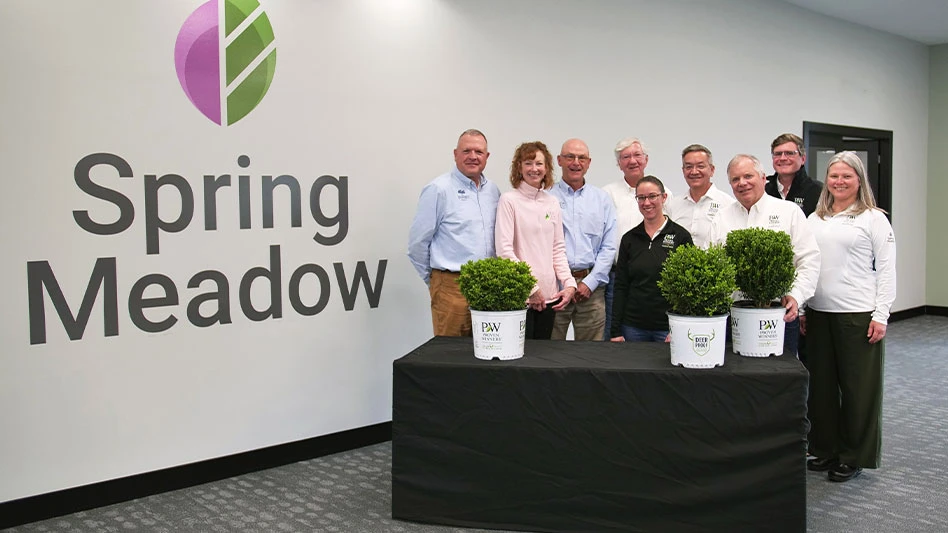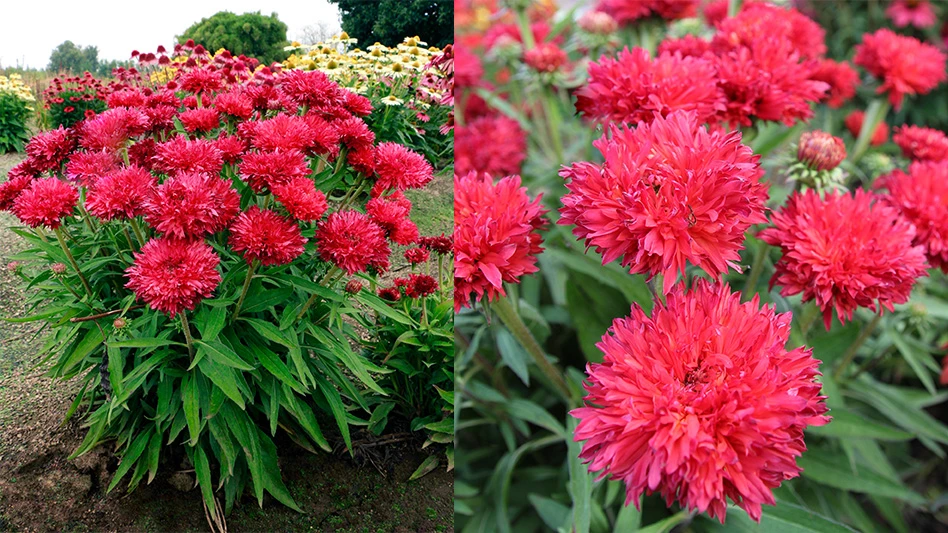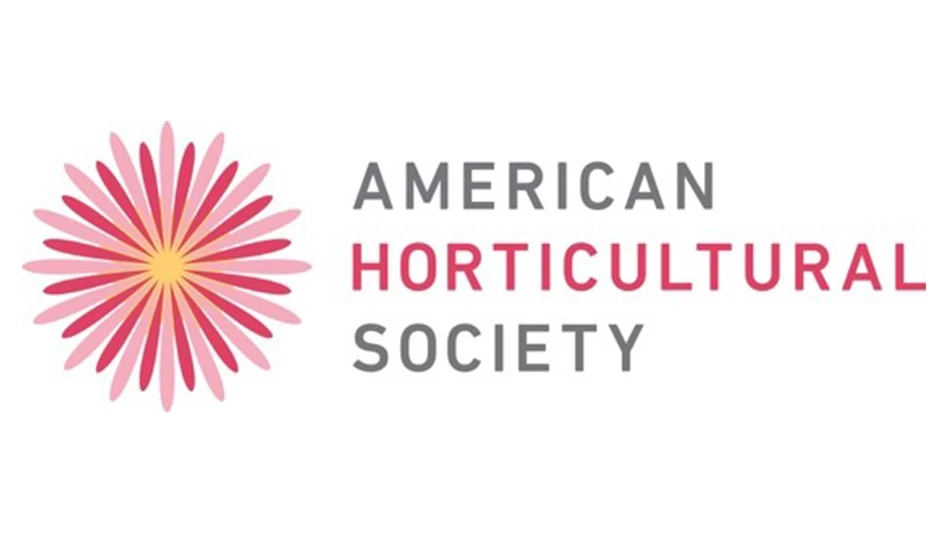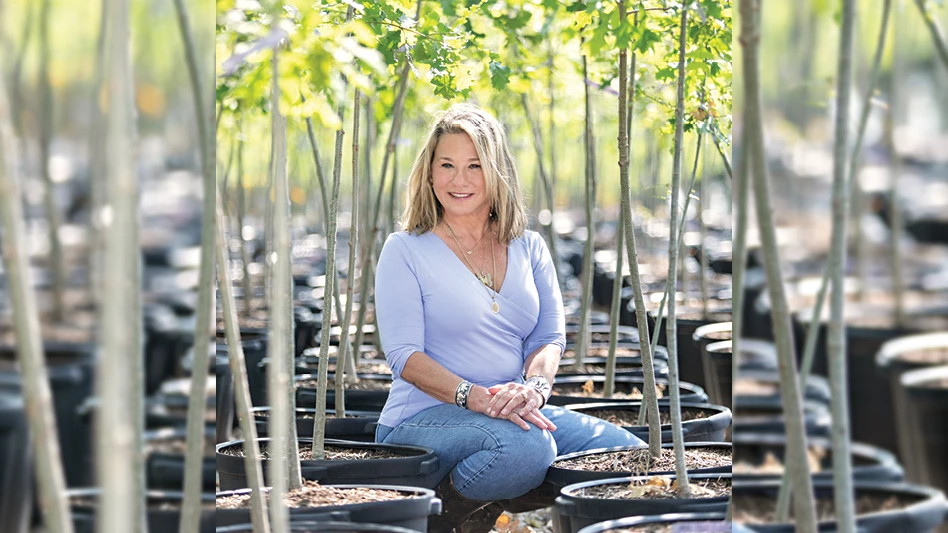
_fmt.png)
This unique hydrangea, shrouded in mystery, disappeared from Europe, where it was developed and discovered. Horticulturists prefer to say it was “lost to cultivation.” I knew nothing about the plant until witnessing it in flower on Cape Cod in July 2017. The singular flower on this lone plant was the most unusual I have observed on a H. macrophylla — a full mophead, the thick green/yellow sepals overlaid with irregular teardrop-shaped pink splotching.
I asked the owner about its identity, and his reply: it’s ‘Greenmantle’ brought back from New Zealand and possibly the only plant in cultivation in America. I asked for cuttings as I have shared numerous hydrangeas and other plants with this gentleman, and he graciously consented.

You might then ask, what’s the origin of ‘Greenmantle’? The internet offers no meaningful information. I discovered the history of the plant in Michael Haworth-Booth’s The Hydrangeas (1984, 5th edition). He describe it as “the freak form of ‘Goliath’-‘Greenmantle’-shown at the 1949 Chelsea Flower Show by the writer…” His description was minimalist, only mentioning the yellow-green, xanthophyll pigments of the sepals are available (for breeding). Subsequent to his mention of the cultivar, I was unable to locate further information in other references. I assume he discovered the sport in the 1940s and was the first to show it in a public setting. ‘Goliath’, the parent, was bred by F. Matthes in Germany in 1923 and does not appear in many modern references but is offered by Hydrangeas Plus, an Oregon-based nursery.

Based on a year’s experience, ‘Greenmantle’ is vigorous with strong stems and has thick, lustrous dark green leaves that develop reddish tints in fall. It’s not potently remontant, but it does develop a few stray flowers on new growth. It is resistant to Cercospora and powdery mildew. In fact, of 40 cultivars in the new Dirr garden, this was among the cleanest, with only H. umbellata completely unscathed. Most of the reblooming cultivars like ‘David Ramsey’, ‘Decatur Blue’, ‘Dear Delores’, ‘All Summer Beauty’, and Endless Summer The Original were heavily defoliated due to Cercospora, but by July had pushed forth new foliage.
All plants of ‘Greenmantle’ did not produce the same “Froggy the Gremlin” spotted toad/frog, green-pink inflorescence. However, all had similar sepal shape and texture. We isolated the most consistent and are separating the various colors. The color mix includes completely green sepals, largely pink with a lighter blush, and the aforementioned coloration.

Familiarity breeds doubts, and as I continued to work with ‘Greenmantle’ I questioned how it could be a sport of ‘Goliath’. ‘Goliath’ sepals are deckled (serrated margins) while ‘Greenmantle’ entire. ‘Goliath’ sepals are thinnish, ‘Greenmantle’ thickish. I thought ‘Greenmantle’ might be tetraploid or something other than a diploid. Using flow cytometry, Dr. Donglin Zhang at the University of Georgia determined ‘Goliath’ was a triploid and ‘Greenmantle’ was a diploid. If ‘Greenmantle’ was a sport of ‘Goliath’, it should also be a triploid. Dr. Zhang took it a step further and ran DNA markers. The banding patterns were uniquely different, further evidence that ‘Greenmantle’ could not have been derived from ‘Goliath’. I have no idea the legitimate parentage of ‘Greenmantle’ and it may be lost to antiquity. One absolute is the positive response it engenders from gardeners and professionals. They ask the same question as me, “What is it?”
Mark Griffith, owner of Griffith Propagation Nursery, is building numbers and by 2019 will have thousands. The gentleman who rescued the plant from the scrapheap of hydrangea history deserves some compensation, and this has been addressed. As a florist potted plant, it has flare. For cuts and floral design, there is no competitor. And for the garden, it brings unique colors and floral persistence. I have no idea of its absolute hardiness or potential longevity in a garden setting. But it is truly a “wow” plant, regardless of absolute identification/parentage.


Explore the September 2018 Issue
Check out more from this issue and find your next story to read.
Latest from Nursery Management
- The HC Companies, Classic Home & Garden merge as Growscape
- Eason Horticultural Resources will now officially be known as EHR
- BioWorks receives EPA approval for new biological insecticide for thrips, aphids, whiteflies
- Ellen Mackenbach-Lakeman appointed new CEO of Dümmen Orange
- Southern Garden Tour sets 2025 dates for trial garden open houses
- New book explores plants that thrive in Rocky Mountains
- American Floral Endowment establishes Herman Meinders Memorial Tribute
- These companies are utilizing plastic alternatives to reduce horticultural waste




